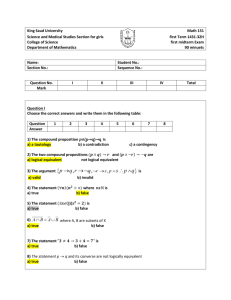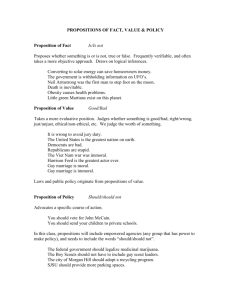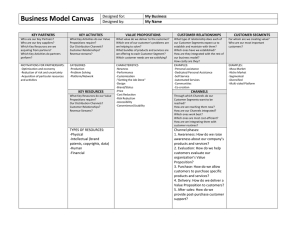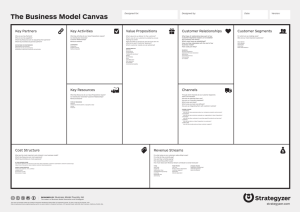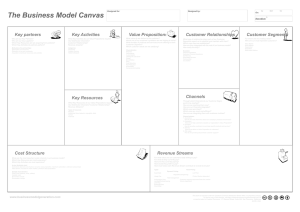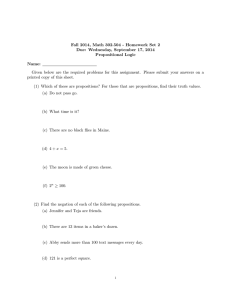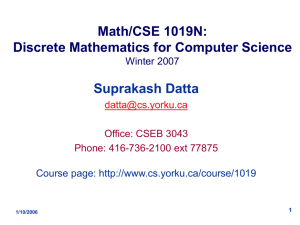Introduction to Logic CIS008-2 Logic and Foundations of Mathematics David Goodwin
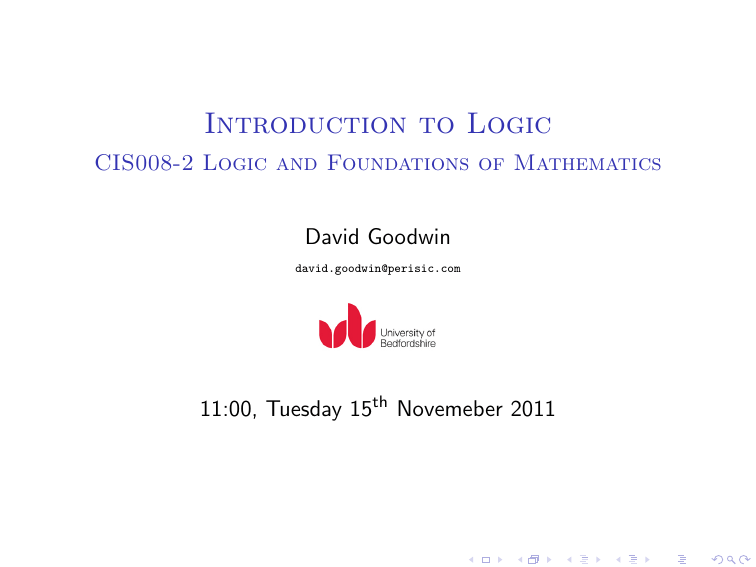
Introduction to Logic
CIS008-2 Logic and Foundations of Mathematics
David Goodwin david.goodwin@perisic.com
11:00, Tuesday 15 th
Novemeber 2011
Outline
1
2
3
The Wire
“ If you play with dirt you get dirty.
”
True or False?
1
The only positive integers that divide 7 are 1 and 7 itself.
2
For every positive integer n , there is a prime number larger than n .
3 x + 4 = 6.
4
Write a pseudo-code to solve a linear diophantine equation.
True or False?
1
The only positive integers that divide 7 are 1 and 7 itself.
True .
2
For every positive integer n , there is a prime number larger than n .
True
3 x + 4 = 6.
The truth depends on the value of x .
4
Write a pseudo-code to solve a linear diophantine equation.
Neither true or false .
Propositions
A sentence that is either true or false, but not both, is called a proposition . The following two are propositions
1
The only positive integers that divide 7 are 1 and 7 itself.
True .
2
For every positive integer n , there is a prime number larger than n .
True whereas the following are not propositions
3 x + 4 = 6.
The truth depends on the value of x .
4
Write a pseudo-code to solve a linear diophantine equation.
Neither true or false .
Notation
We will use the notation p : 2 + 2 = 5 to define p to be the proposition 2 + 2 = 5.
The conjunction of p and q , denoted p ∧ q , is the proposition p and q
The disjunction of p and q , denoted p ∨ q , is the proposition p or q
Conjuction and Disjunction
If p : It is raining, q : It is cold, then the conjunction of p and q is p ∧ q : It is raining and it is cold.
The disjunction of p and q is p ∨ q : It is raining or it is cold.
Truth Tables
Truth tables describe the truth values of propositions such as conjunctions and disjunctions.
T denotes true and F denotes false.
Conjunction p q p ∧ q
T T T
T F
F T
F F
F
F
F p
Disjunction
T q
T p ∨
T
T F T
F T T
F F F q
Negation
The negation of p , denoted ¬ p , is the proposition not p
Negation p ¬ p
T F
F T
Operator Precedence
In expressions involving some or all of ¬ , ∧ , and ∨ , in the absence of parentheses, we first evaluate ¬ then ∧ then ∨ .
Example
Given the proposition p is false, proposition q is true, and the proposition r is false, determine whether the proposition
¬ p ∨ q ∧ r is true or false.
Operator Precedence
In expressions involving some or all of ¬ , ∧ , and ∨ , in the absence of parentheses, we first evaluate ¬ then ∧ then ∨ .
Example
We first evaluate ¬ p , which is true. We next evaluate q ∧ r , which is false. Finally we evaluate
¬ p ∨ q ∧ r which is true.
Conditional Propositions
If p and q are propositions, the proposition if p then q is called a conditional proposition and is denoted p → q
The proposition p is called the hypothesis (or antecedent ) and the proposition q is called the conclusion (or consequent ). With respect to operational precedence, the conditional operator → is evaluated last.
Example
Conditional Proposition p q p → q
T T T
T F
F T
F F
F
T
T
Example
Assuming that p is true, q is false, and r is true, find a p ∧ q → r b p ∨ q → ¬ r c p ∧ ( q → r ) d p → ( q → r )
Example
Conditional Proposition p q p → q
T T T
T F
F T
F F
F
T
T
Example
Assuming that p is true, q is false, and r is true, find a p ∧ q → r is true ( p ∧ q is false) b p ∨ q → ¬ r is false ( p ∨ q is true) c p ∧ ( q → r ) is true ( q → r is true) d p → ( q → r ) is true ( q → r is true)
Biconditional Propositions
If p and q are propositions, the proposition p if and only if q is called a biconditional proposition and is denoted p ↔ q
Biconditional Proposition p q p ↔ q
T T
T F
F T
F F
T
F
F
T
Logical Equivalence
Suppose that the propositions P and Q are made up of the propositions p
1
, . . . , p n
. We say that P and Q are logically equivalent and write
P ≡ Q provided that, given any truth values of p
1
, . . . , p n
, either P and Q are both true, or P and Q are both false.
De Morgan’s Laws for Logic
¬ ( p ∨ q ) ≡ ¬ p ∧ ¬ q
¬ ( p ∧ q ) ≡ ¬ p ∨ ¬ q p q ¬ ( p ∨ q ) ¬ p ∧ ¬ q ¬ ( p ∧ q ) ¬ p ∨ ¬ q
T T F F F F
T F
F T
F F
F
F
T
F
F
T
T
T
T
T
T
T
Converse & Contrapositive
We call the proposition q → p the converse of p → q , thus a conditional proposition can be true while its converse is false.
The contrapositive (or transposition ) of the conditional proposition p → q is the proposition ¬ q → ¬ p .
Example
Example
Write the conditional proposition “If the network is down, then I cannot access the internet” symbolically. Then write the contrapositive and converse in words.
Example
Example
Write the conditional proposition “If the network is down, then I cannot access the internet” symbolically. Then write the contrapositive and converse in words.
Let p : The internet is down q : I cannot access the Internet
Then the conditional proposition is p → q .
Example
Example
Write the conditional proposition “If the network is down, then I cannot access the internet” symbolically. Then write the contrapositive and converse in words.
Let p : The internet is down q : I cannot access the Internet
Then the conditional proposition is p → q , the contrapositive is
¬ q → ¬ p “If I can access the internet, then the network is not down”.
Example
Example
Write the conditional proposition “If the network is down, then I cannot access the internet” symbolically. Then write the contrapositive and converse in words.
Let p : The internet is down q : I cannot access the Internet
Then the conditional proposition is p → q , the converse is q → p
“If I cannot access the internet, then the network is down”.
Logical Equivalence
The conditional proposition and its contrapositive are logically equivalent: p q p → q ¬ q → ¬ p q → p
T T T T T
T F
F T
F F
F
T
T
F
T
T
T
F
T
“If the network is down, then I cannot access the internet” is logically equivalent to “If I can access the internet, then the network is not down”.
